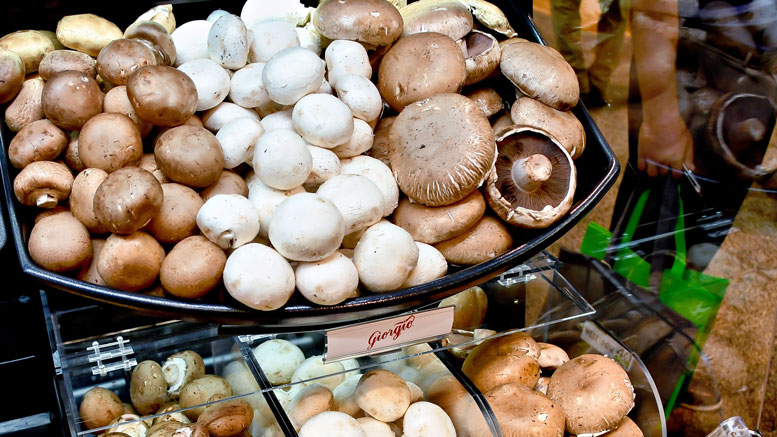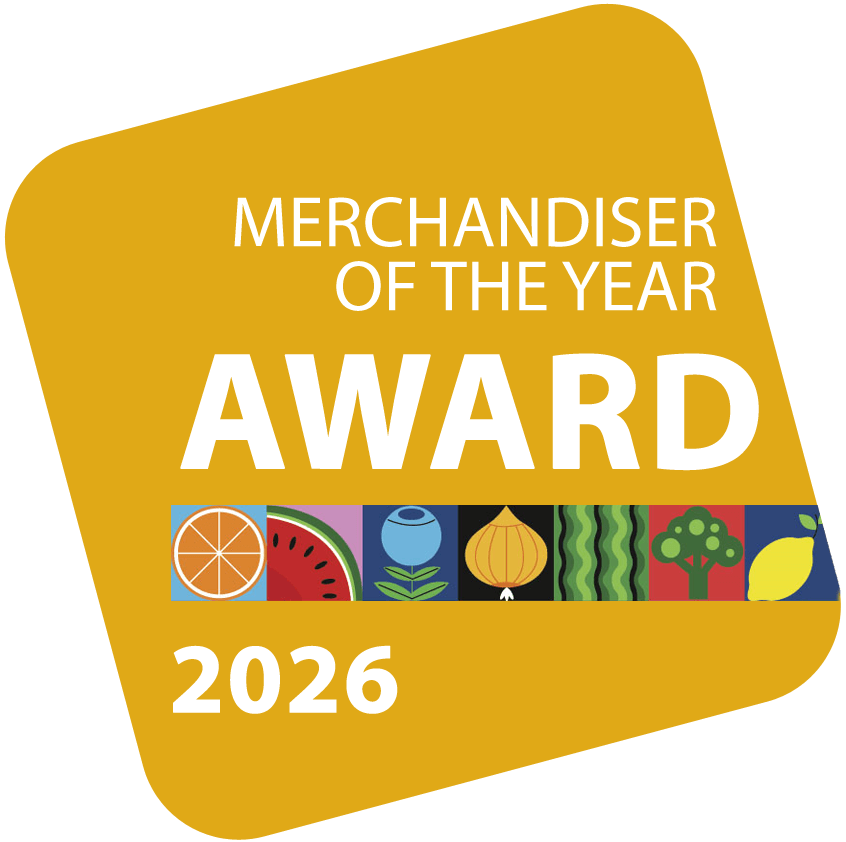Mushrooms Can Power Sales
September 3, 2024 | 8 min to read
Mushrooms are experiencing increased popularity as consumers seek healthier, protein-forward options. Whole Foods highlights a shift from white button to brown varieties, like cremini and portobello, which now comprise 42% of sales. Retailers are enhancing convenience through pre-packaged products, while clear packaging is gaining traction. The nutritional benefits of mushrooms and their versatility in meals position them as a trending superfood. Cross-merchandising strategies effectively promote mushrooms alongside complementary items for enhanced consumer engagement.

Mushrooms are tasty, good for you and can be married with a variety of other foods.
Retailers can approach mushrooms in a variety of ways, but still create a sufficient profile and interest to maintain gains generated in the pandemic.
Take Whole Foods, for example. In Jersey City, NJ, an affluent suburb of New York City, Whole Foods reserves a cold case just for mushrooms and herbs, with mushrooms taking most of the space. It offers bulk product in baskets on the bottom shelf and sliced and packaged products, including caps and sliced items, above.
In its Top 10 Food Trends for 2024, Whole Foods asserts it’s seeing demand for new and emerging protein-forward products, with mushrooms, walnuts, tempeh and legumes in place of complex meat alternatives.
On the other side of the Hudson River within the borders of New York City, Big Deal Foodtown operates in the Morris Park section of the Bronx. Owner Miguel Garcia describes his shoppers as working, middle class consumers who represent a range of ethnic groups. So, the range of mushroom varieties isn’t the critical issue for him, rather his shoppers require convenience products to get them through their busy days. So, Garcia incorporates fresh packaged sliced mushrooms into his meal-kit section, and he uses mushrooms in mixed veggie packs in the same real estate, all produced in-store.
SHIFT IN MUSHROOMS
Although many observers cite the COVID-19 pandemic as sparking additional interest in mushrooms, that’s not the whole store, says Eric Davis, senior vice president with the Mushroom Council, Lee’s Summit, MO.
“A look at fresh mushroom sales trends over a 10-year span provides a much cleaner look, compared to the patterns of the past few years,” Davis says. “While white mushrooms remain the largest seller in retail, the 10-year comparison shows substantial shifts in sales by type. There has been a long-term shift from white buttons to cremini/Baby Bellas and portobello.”
In 2013, white button mushrooms made up 66% of total mushroom retail dollars, Davis says, but now, 10 years later, this share is down to 52%. Brown mushrooms, the combination of cremini and portobello, increased from 30% of fresh mushroom dollar sales in 2013 to 42% in 2023.
“Brown mushrooms gained nearly $213 million in sales, reflecting an increase of 67.4%.”
Top three selling regions in dollars in 2013 were the Northeast, the Great Lakes and the Southeast while, in 2023, they were the Northeast, West and Great Lakes. Davis points out the top three contributors to mushroom dollar growth on a 10-year basis are the West, Mid-South and Great Lakes.

PRODUCE BUSINESS/DEAN BARNES PHOTO
Kelly Hale, vice president of sales, marketing and distribution at Highline Mushrooms, Langley, British Columbia, Canada, says education and familiarity are boosting the entire commodity.
“Historically, mushrooms have exhibited a seasonality in consumption, where shoppers tend to buy more in the winter months,” she says. “We are seeing a lot more focus on the flavors and nutritional benefits of mushrooms and they are trending as an emerging superfood that can be added to all meals throughout the day. Growers are meeting the demands of the marketplace and launching creative, value-added packages to entice shoppers.”
Time of year should be a consideration in mushroom merchandising and promotion.
“We do see an increase in mushroom consumption in the winter months as colder temperatures boost home meal preparation to 78.8%,” Devon Kennedy, Highline national marketing manager, points out. “We show that people are cooking 24% more from scratch and 42% are utilizing leftovers.”
PACKAGING DEVELOPMENTS
Hale says Highline launched clear packaging earlier this year and has received an overwhelming response from retailers.
“Mushrooms are one of the last categories in produce to switch to clear tills, and shoppers are thrilled to be able to see what they are purchasing,” she says.
Sustainability does factor into how packaging is developing in the mushroom sector.
“Consumers and retailers are interested in buying more sustainable packaging, including recyclable plastic, compostable and recyclable paperboard options,” says Jim Garsow, chief marketing officer, Caputo & Guest, Kennett Square, PA. “However, the majority of consumers are not willing to pay substantial premiums for these packaging types.”
Garth McLean, vice president of sales and marketing, Farmers Fresh, Abbotsford, British Columbia, Canada, urges everyone in the mushrooms sector to look ahead to packaging developments.
“Things are changing, especially with California laws,” he says.
Sean Steller, director of business development at Phillips Mushroom Farms, Kennett Square, PA, says many consumers look for packaged mushrooms.
“We have seen an overall reduction in bulk mushroom items on shelves over the last few years,” he says. “Bulk mushrooms traditionally have higher shrink numbers compared to packaged. Packaging protects the mushrooms, and extends shelf life. Some consumers prefer to select the individual mushrooms, but in general, we recommend packaged items to improve shelf life and reduce shrink.”
At Basciani Foods, Avondale, PA, Fred Recchiuti, director of food safety and quality assurance, says they’ve been dealing with foodservice mushroom packaging.
“We introduced this patented bag, which more than doubles shelf-life. Having twice as much time to use the fresh product alleviated their anxiety on the ordering front so they could concentrate on all of the other anxiety and pain-points that came along with running a restaurant during COVID,” he explains. “The patented bag is tamper-proof, which increases food safety, security, and eliminates the possibility of foreign materials entering the product as it moves through the supply chain.”
A HEALTHIER CHOICE
Although broader concerns have an impact, retailers would do well to highlight nutritional benefits of mushrooms.
“As consumers increasingly prioritize healthier choices in their diet, mushrooms are frequently utilized, either as substitutes for meat or as complementary ingredients in plant-based recipes,” says Bryan Shelton, vice president of sales and marketing, Giorgio Fresh, Blandon, PA.
And as people become more aware of the benefits of mushrooms, both culinary and nutraceuticals, there is growing demand for organic mushrooms, says Ruth Botengan, owner at Clover Specialties, Gardena, CA.
“Due to climate change, however, the supply of mushrooms all over the world is unsteady,” Botengan says. “Europe has had a very long drought, affecting the supply of not only olive oil but saffron, truffles and, our favorite, the mushroom. The prolonged war in Ukraine has also severely impacted the supply of culinary mushrooms. The Balkans, Ukraine and Russia included, were important suppliers of fresh and dried culinary mushrooms. And Russia, in particular, was an important supplier of Chaga mushroom, a medicinal mushroom.”
MERCHANDISING LOOKS
Shelton says consumer outreach is key when it comes to promoting mushrooms on the sales floor.
“Placing signage and strategically merchandising mushrooms alongside complementary items, like vegetables or proteins, coupled with meal suggestions and explanations of health benefits, proves an effective method for showcasing mushrooms,” he says.
The Mushroom Council’s Davis says cross-merchandising works best when it emphasizes meals and conveniently incorporates mushrooms and complementary, preferably frequently purchased, items needed to prepare them.
“Retailers will have the best results when cross-merchandising items that have high household penetration,” he says. “For instance, if you have a meat, a side and a vegetable, use ground beef or chicken breast for the protein, as they have much higher household penetration among meats. The same logic applies to mushrooms: Use white or creminis, as they are the biggest sellers when compared to specialties.”

PHOTO COURTESY FOUR SEASONS PRODUCE
One exception, Davis notes, are foodie stations or meal kits that are aimed at bringing something different or more unique. In that case, he recommends cross-merchandising something like cuts of lamb for meat, and a shiitake, trumpet or oyster for mushrooms to help introduce people to new items.
Shelton says pairing mushrooms with other foods is particularly attractive. “All mushrooms provide an opportunity for cross-merchandising,” he says. “Portobellos are great with burger condiments. Shiitakes are the perfect mushroom for Asian products, and oysters pair well with pasta or fresh herbs. Seasonal promotions are a great way to introduce mushrooms in a dish that is grab-and-go for consumers.”
REACHING CONSUMERS
To bolster promotions to the consumer, McLean, of Farmers Fresh, says retailers should regularly think about online promotional possibilities. The addition of elements, such as recipes on packaging, is expensive, so if retailers post or link to recipes, the resource is there at a lower cost.
But it’s important that stores have big merchandising displays, he says.
Davis says inflation has prompted consumers to keep close tabs on promotions as they try to stretch their food dollars. However, the nature of promotions is changing.
“For many years, the paper circular was the source of promotional research,” he says. But he cites August research by 210 Analytics that found, over the year, the paper ad dropped to fourth place, behind in-store signage, the store app and digital circulars.
That means good in-store execution of mushroom sales promotions is important to catch the eyes of shoppers, Davis emphasizes. This can be done in different ways, from secondary sales displays to having sales signage that shows a meal using mushrooms to prominently displayed sales discounts.
Whether in store or online, promotions that include a personalization element can have advantages, Davis says.
“For instance, if past shopping behavior shows that households are above-average users of mushrooms, promotions coordinators can move the item to the front page or display it in combination with popular co-purchases such as steak, omelet or salad fixings,” he says.
29 of 30 article in Produce Business September 2024

